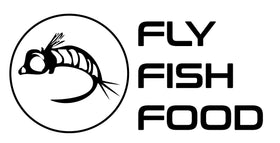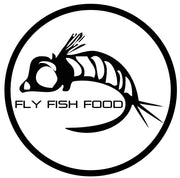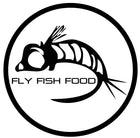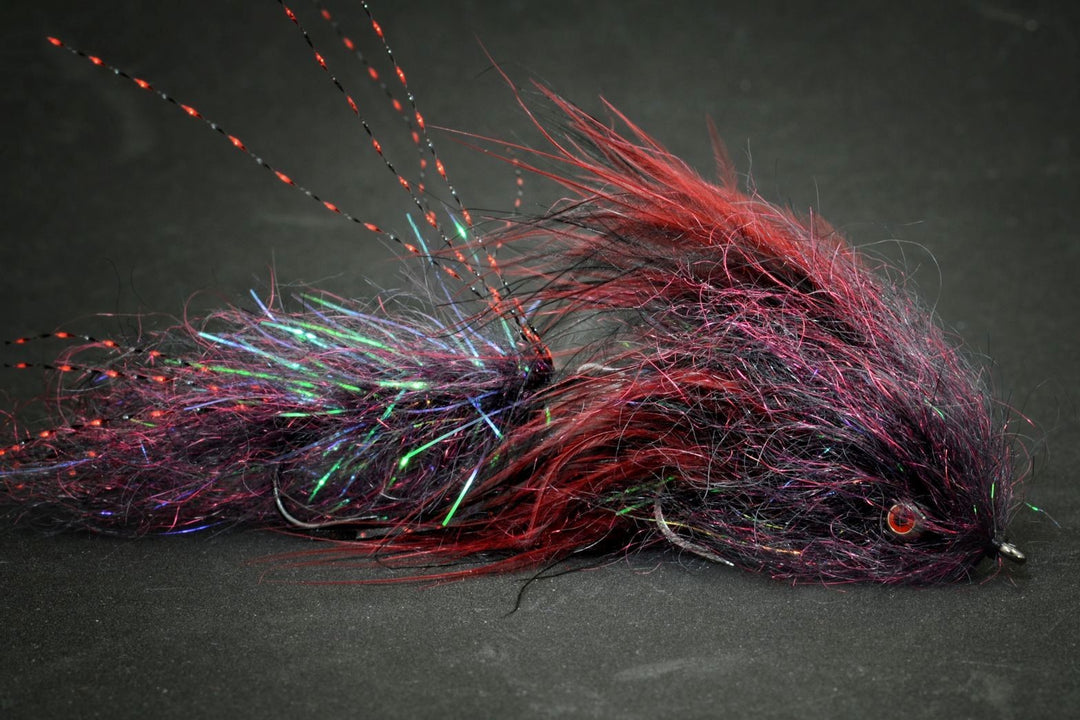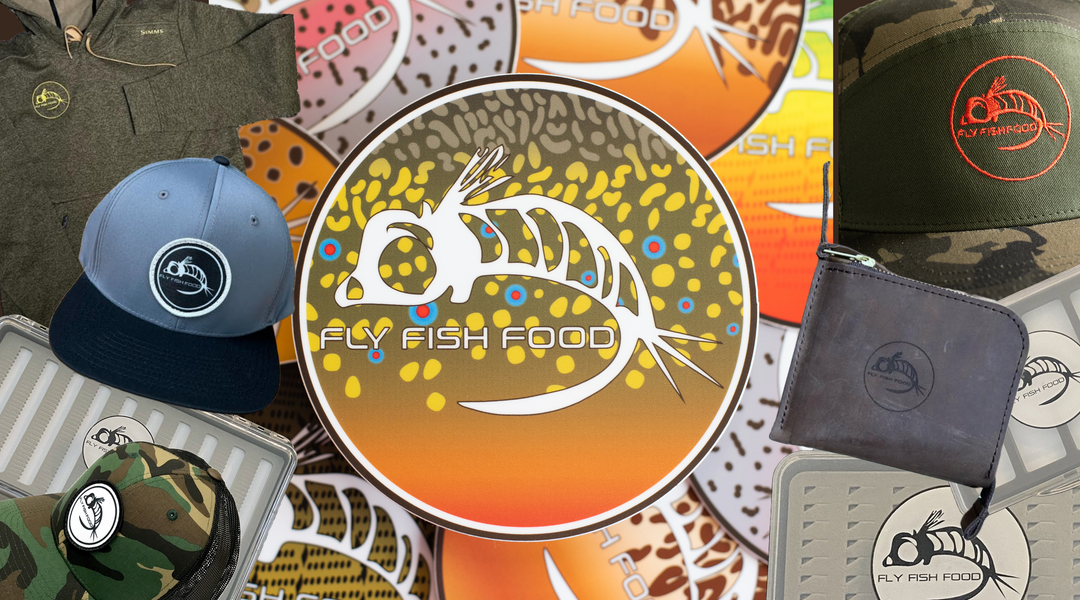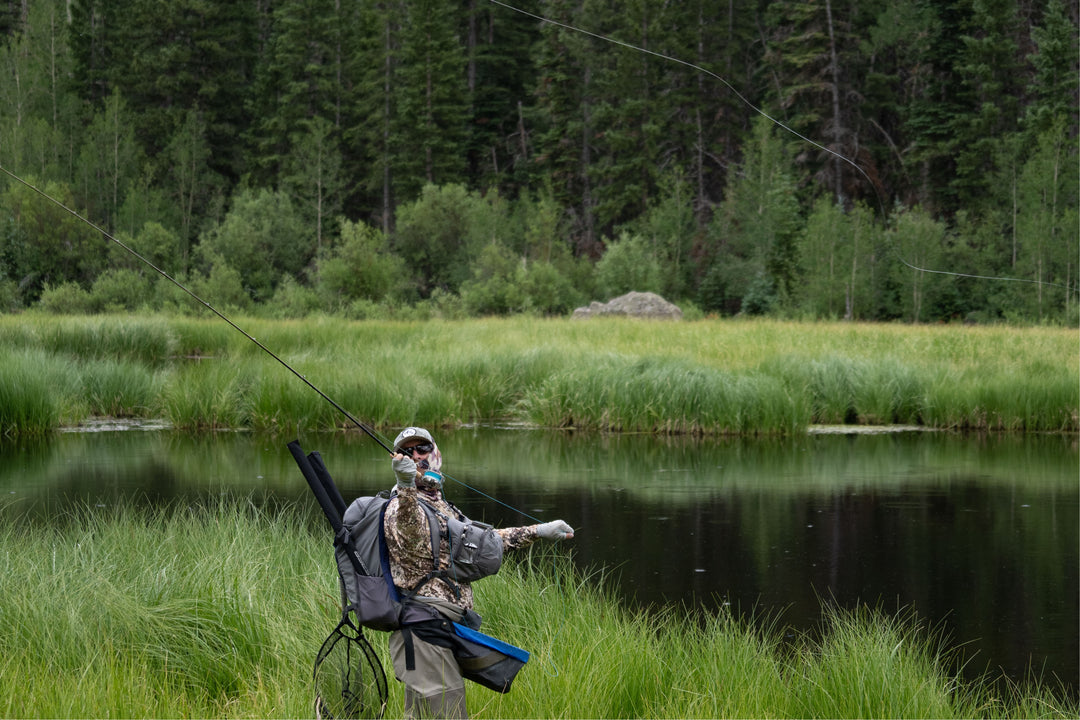The 7 Deadly Sins of Naming Flies
Written By: Clark "Cheech" Pierce
Tradition always wins out? Right?
"...then I switched to the good ol feather wing tipped traditional style dry fly with brown and grizzly hackle wrapped together, and a grayish muskrat dubbing body with a hackle tail that is half grizzly and half brown."

Now that I have your attention, it's about time we have a very serious conversation about naming fly patterns. Full disclosure, I’m a contracted fly tyer with Fulling Mill and part of my job requires me to be creative at the vise. I have flies with names such as the Cheech Leech, Grumpy Frumpy, and the Drunk Drea. Regardless of how far off the beaten path I go with fly creation, some hate the new names because “everything has already been done before and they are all just variations.” As everybody who is reading this is aware, fly fishing is a sport for serious minded adults with no room for TomFoolery in their lives. As such, we only fish dry flies. We have large collections of double taper fly lines and automatic fly reels, we have our names embroidered to our shirts, and we complain about anything and everything that is not what WE think is right and good in the world of fly fishing.


If there were an official “Fly Fishing Manual,” we would have one riddled with coffee rings, highlighter marks and the occasional page that is ripped or wrinkled because we fell asleep reading and our monocle hit the page before our face did. Ok, I must point out that the above is very tongue in cheek, but there seem to be some feelings that get hurt every time a fly gets a name. .
On one side of the coin, the ultra purists who DEMAND that there is no new fly that has ever come out, and that all new flies shall NOT be allowed to have a fancy new nickname. On the other side of the coin you have anglers who have no issue what you call the fly as long as it works. What side am I on? There is a balance in all of this stuff. Should we value tradition, sure! Should we also be creative and *gasp* keep creating “new” flies? ABSOLUTELY.
Remember the good old days of fly fishing?
Right now we are smack dab in the good old days of fly tying and it just keeps getting better, so here are some important facts to consider: We now have genetic hackles that would have been impossible 30 years ago because every generation of birds progresses the quality. We have broad access to many many synthetic materials in any color combo imaginable, and many more are released each year. We have instant access to more information than we have ever had before, and if you’re the type of person who thinks that social media broke fly fishing and fly tying, keep in mind that you are here reading this - on social media. Using social media to complain about social media is kind of… insane. Anyhoo, we live in an era that allows us to create and improve flies like we’ve never experienced before. Let’s break this down and figure out where naming a fly jumps into the mix and why it makes sense.


I just went downstairs and farmed out a few flies from the bins to give them an assessment on their names. The first is a fly called a miracle nymph which is exactly like a zebra midge. Next, I pulled out an Adams, a Light Cahill, a PMD, and a BWO. All tied with hackle fibers for a tail, dubbing body, and hackle tipped wings. Are they all Adams? Is the Adams the imposter and really should just be called a Gray Drake or something? Next on the list is the Royal Wulff. A great fly that was designed completely by Lee Wulff. OR is it just a Royal Coachman with a better tail and wing? If we are on the side of never ever EVER giving a fly a new name, these flies would casually be described streamside thusly:
“Yeah man, I was doing great with the Zebra midge with a whitish creamish body and copper wire and a black thread head with no bead and some people tie them with a glossy head and some don’t, then I switched to the good ol feather wing tipped traditional style dry fly with brown and grizzly hackle wrapped together, and a grayish muskrat dubbing body with a hackle tail that is half grizzly and half brown.”
“After those, I switched to the good ol Royal Coachman variation tied with calf body hair or calf tail depending on what side of the fence you are on, and it also has an elk, deer, or moose tail to aid with floatation.”
“So yeah, after those three flies I just went home.”
That was hard to read! I’ll bet all the change in my pocket that if you ran into such a feller streamside you’d probably head the other direction so fast you wouldn’t even have heard his awesome description of the Royal Wulff. I wrote all of the above to get to this very important point - the main reason flies get new names is for convenience in speaking. This is how the above nightmare interaction would have gone:
“Yeah man, I was doing great with the Miracle Nymph but I switched to an Adams and a Royal Wulff.”
“So yeah, after those three flies I just went home.”
If you prefer the long drawn out way to describe fly variations, by all means, go for it, but I’ll warn you that it’s going to take a bit of research to know what fly was created first for proper attribution. Can you imagine the horror of finding out that the Hare’s Ear is really just a variation of a fly called the “Hairy Williker.” We’d have some work to do.
I’ve always pushed creativity and innovation above just sticking to historical flies but that’s just what I prefer to tie. It’s an art form that is worthy of pursuit in whatever method the artist chooses. If history is most important, by all means go down that rabbit hole! If you like to be creative and name your flies after your Pokemon cards, more power to you!
At the end of the day if a fly name is going to make you have a bad day, it’s not fly tying that’s the issue!
Take a deep breath, listen to some Stick Figure, and realize that each angler has individual reasons to pursue tying and fishing.

